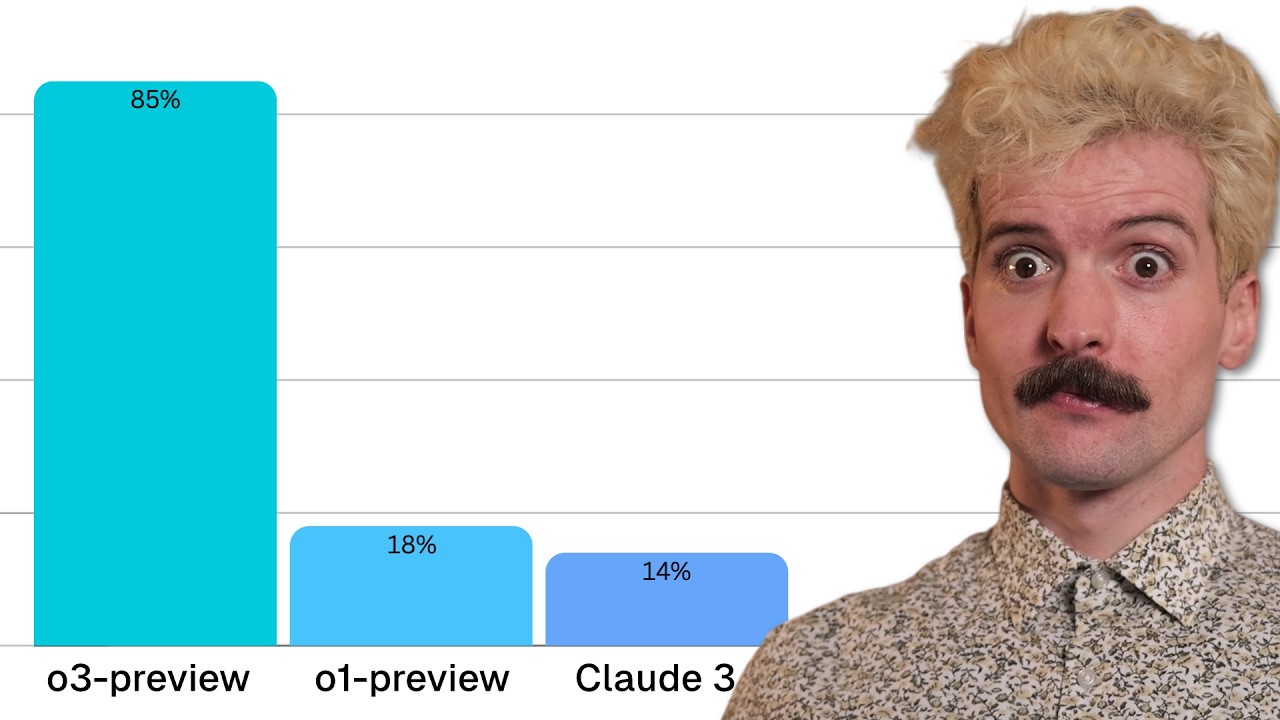The video discusses OpenAI’s new O3 model, which has achieved unprecedented performance in the AGI Arc test, scoring between 76% and 88%, significantly surpassing previous models. While showcasing its impressive capabilities in solving complex tasks, the creator also highlights concerns about the high operational costs and safety implications associated with such advanced AI technology.
In a recent video, the creator discusses the groundbreaking advancements made by OpenAI with their new O3 model, which marks a significant leap in AI capabilities. Previously, the creator expressed concerns about the stagnation in AI development, noting that improvements had dwindled from 5x to just 5%. However, the introduction of the O3 model has changed that perspective, showcasing impressive performance metrics, particularly in the AGI Arc test, where O3 scored between 76% and 88%, far surpassing earlier models that struggled to reach even 35%.
The video highlights the importance of the AGI Arc test, which has been a challenging benchmark for AI models since its inception in 2019. The test evaluates a model’s ability to learn and apply new skills on the fly, and O3’s performance is unprecedented, achieving scores that place it above human performance levels. The president of the Arc Prize Foundation, Greg Camad, elaborates on the test’s design and the significance of O3’s results, emphasizing that this marks a new era in AI capabilities.
Despite the impressive advancements, the creator points out the substantial costs associated with running the O3 model. The video details the expenses incurred during testing, revealing that the high-performance version of O3 costs around $20 per task, with some tests reaching up to $20,000 in compute costs. This raises concerns about the sustainability of such high operational costs, especially as the demand for AI continues to grow. The creator notes that the hardware limitations are becoming a bottleneck, contradicting earlier assumptions about a vast hardware overhang that would support rapid AI advancements.
The video also showcases practical applications of the O3 model, demonstrating its ability to solve complex coding and scientific problems. The creator shares an example where O3 generates a Python script to launch a server, illustrating the model’s reasoning capabilities and efficiency. This level of performance positions O3 among the top developers in the world, showcasing its potential to revolutionize various fields by automating complex tasks.
Finally, the creator addresses the safety concerns that come with such powerful AI models. OpenAI is taking proactive measures to ensure the safety of O3 by inviting external researchers to participate in testing and safety evaluations. The video concludes with a reflection on the dual nature of AI advancements—while the future holds exciting possibilities, it also presents significant risks that need to be managed carefully. The creator encourages viewers to share their thoughts on the implications of O3, emphasizing the need for ongoing dialogue about the future of AI.
